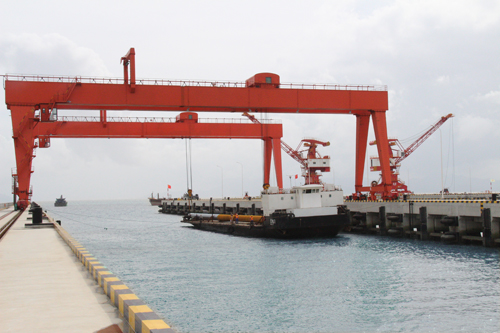ERW (Electric Resistance Welding) is a common method used to manufacture steel pipes, including ERW steel pipes. The process involves the use of electrical current to heat the edges of the steel strip or coil to a point where they can be fused together. Below are the key steps in the ERW steel pipe welding process.

1. Uncoiling and Straightening:
The process begins with uncoiling a steel coil or straightening a steel strip to form a flat surface. This material is often referred to as the skelp.
2. End Shearing and Welding Preparation:
The ends of the skelp are sheared to produce clean, square edges, preparing them for welding.
3. Forming:
The skelp is then formed into a cylindrical shape using a series of rollers. The edges of the skelp are brought together, creating a longitudinal seam.
4. High-Frequency Induction Welding:
The longitudinal seam is welded using high-frequency induction welding. An electric current is applied to the edges, generating heat and causing them to melt and fuse together.
5. Weld Heat Treatment:
After welding, the heat-affected zone (HAZ) undergoes heat treatment to relieve stresses and improve the overall weld integrity.
6. Sizing and Reduction:
The welded tube passes through additional rollers to achieve the desired size and wall thickness.
7. Cooling:
The newly formed and welded steel pipe is cooled.
8. Cutting:
The steel pipe is cut to the required length.
9. Testing and Inspection:
The ERW steel pipe undergoes various non-destructive and destructive tests to ensure quality and compliance with standards. This may include visual inspection, ultrasonic testing, hydrostatic testing, and dimensional checks.
10. Surface Treatment:
The final step involves surface treatment, which may include removing any external defects, applying a protective coating, or galvanizing the pipe, depending on the intended application.
ERW welding offers advantages such as high production efficiency and the ability to produce pipes with various diameters and wall thicknesses. It is commonly used for manufacturing pipes for water, gas, and oil transmission, as well as structural and mechanical applications. The process is suitable for producing both small and large-diameter pipes.
Contact: Mr. Rao
Phone: +86-153 0846 7103
Tel: +86 731 8504-7708
Email: info@jinxi-steel.com
Add: No. 568,Chuanggu Industrial Park, Queyuan Road, Tianxin District, Changsha City, Hunan Province, P.R.China.
Whasapp
